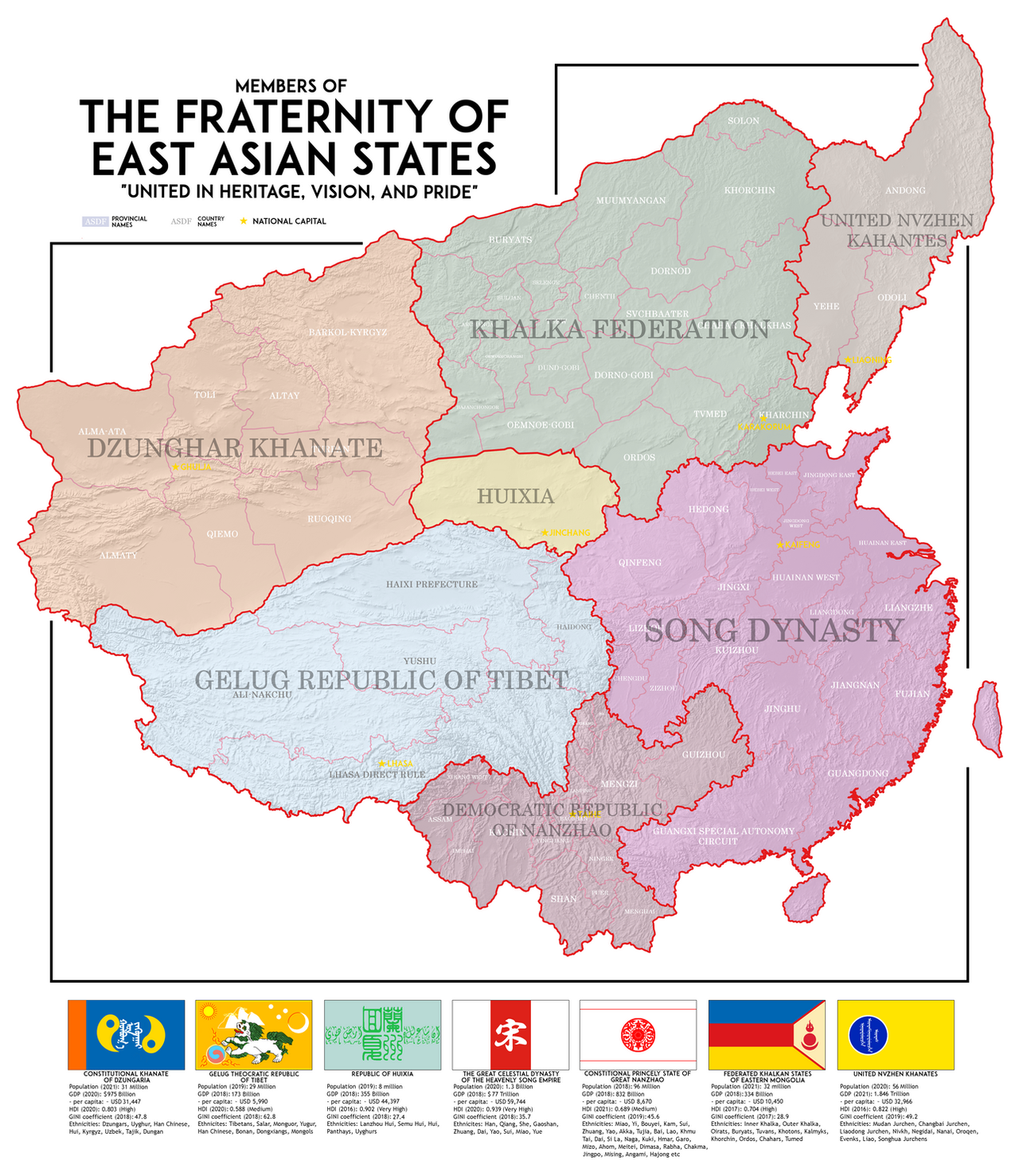HOME | DD
 ADozenEggs — Map of a Present Day Song Dyansty
ADozenEggs — Map of a Present Day Song Dyansty

#mongolia #alternatehistory #alternateuniverse #china #chinese #flag #flagdesign #flags #history #imaginary #mapping #mongolian #mongols #political #politics #taiwan #taiwanese #tibet #tibetan #vietnam #imaginaryworld #mapmaking #mapsandflags #imaginarymaps
Published: 2021-08-22 13:46:45 +0000 UTC; Views: 22149; Favourites: 111; Downloads: 27
Redirect to original
Description
Timeline Notes
Song Dynasty never collapses, nor does it ever lose the north, due to the combined factor of insane social economic development funding incredible advances in external diplomacy and internal management, which saves the decadent and declining military of the Song from becoming fully useless.
The Mongol Empire never arises, due to clever political manoeuvring between the Khalka clans to the north, Genghis Khan or similar entities are barred from ever arising. This creates a butterfly effect that spreads throughout the world, but I have not thought too deeply of that yet.
The world witnesses the Song giant industrialize in the 15th century, alongside the European Renaissance, which then catalyses the Islamic Renaissance
The Song Dynasty asserts its hegemony over its neighbours economically and culturally, with influences and the tributaries extending far west of Baghdad, these tributaries being much less akin to the traditional tributary system, and more similar to the modern Chinese Belt and Road, neighbouring states shown in the map have all been exploited and controlled by the Song for near millennia.
The Kingdom of Nanzhao always proved hard to defeat on the battlefield for the Song, with a general unable to replicate Zhuge Liang, the Chinese took on a different approach, economic devastation and then domination. Nanzhao would then be pillaged and extorted by the Chinese extensively, while becoming a pseudo-protectorate to rule for the Chinese. Attempts at breaking free has occurred multiple times, however, without a single drop of blood by the Chinese, they were reincorporated.
The Mongolians attempted to break free from the shackles of the Chinese through migrating westward, forming the Dzunghar Khanate, however with constant incitement of rebellion by the Chinese, constant wars against neighbouring states, loyal mongols, Tibetans, and Uyghurs, they were forced into submission.
The Uyghurs were one of the few nomadic peoples that adopted Islam, however, despite their loyalty to the Song, during an area of increasingly anti-Muslim sentiment in China - caused by an Islamic Revolt in Fujian and Nanzhao, Hui Muslims and Uyghurs fled en masse into Qinghai, and formed a breakaway state from the Mongolians. With time, the relationships cooled, and with the key position of the Hui and Uyghurs in Qinghai on the Silk Road, they were one of the few states that the Song tried intensely to win over, providing Huizhou with incredible amounts of wealth.
The Jurchens remained impotent through Song manipulations, and the clans were encouraged to form greater hordes, which eventually amalgamated into three great clans, who were then united by Song command to become a single polity during the early eighteenth century. The Jurchens in this timeline are incredibly Sinicized, well not too far from reality.
Tibet be doing its thing, as close allies with the Song for centuries, despite some wars between the two, at times, the Tibetans suffered from an overthrow of the monarchy and then the instatement of a religiously fundamentalist “republic” ala Taliban, after decades of isolation, Song investments once again enter the country to exploit then.

























